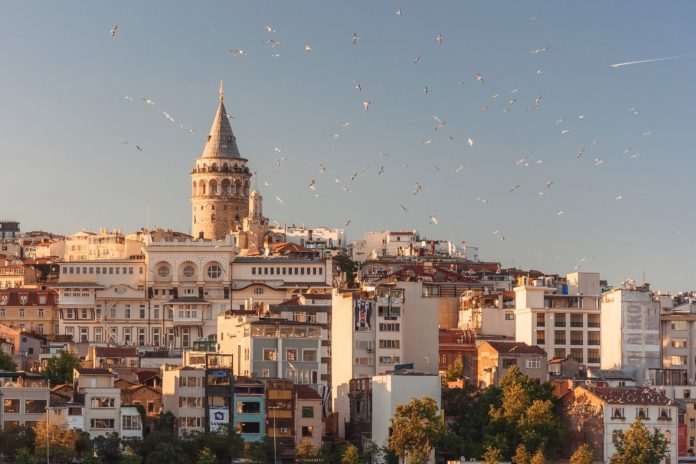Istanbul, Turkey bridges the East and West, straddling both Asia and Europe. Not only does it merge the two parts of the world, but the Middle Eastern city also integrates the past and present, especially in its unique architecture. The city has influences from both cultures and it was once the capital of the Ottoman and Byzantine empires, which gives it a rich history. Between the bustling streets and bazaars to the many monuments, there’s never a dull moment in Istanbul. Here’s everything you need to know before traveling there.
Best Time to Visit
The best months to visit are from March to May and between September and November. Room rates are average, the temperatures are between the 60s and 70s, and the crowds are manageable. The peak season is from June to August and the prices are more expensive due to the increased demand. December through February are the cheapest time to visit, but it’s rainy and snowy.
How to Get Around
Buses and trams are the best way to get around the city and they cover the touristy areas. Be aware that there are no maps inside the buses and drivers don’t announce the stops, so you’ll need to know where you are headed. Another option is the metro, but the stops are farther apart and aren’t ideal for sightseeing. Don’t drive in Istanbul because the road signs are in Turkish and accidents happen often.
Where to Stay
Raffles Istanbul
The location of this 5-star hotel can’t be beaten—it’s situated above the Bosphorus and Zorlu’s shopping, dining, and entertainment megaplex are connected to the hotel. The rooms come with butler service, walk-in closets, private balconies, and bathrooms with marble tubs and showers. There’s also a spa, multiple restaurants, swimming pools, and a kids club.
Çiragan Palace Kempinski Istanbul
This former Ottoman Empire palace will have you feeling like royalty while you enjoy amazing views of the Bosphorus. The rooms have traditional Turkish decor and they overlook Yildiz Park or the sea. The 5-star hotel has a spa with many treatments, a hammam, a fitness center, a sauna, and an outdoor infinity pool. There are also three restaurants and many of the top attractions are within three miles.
Sirkeci Mansion
Just steps from Topkapi Palace Museum and the Istanbul Archaeological Museums sits Sirkeci Mansion, a 4.5-star hotel. The hotel has immersive experiences like free Turkish cooking classes and weekly guided walks through the city. There is also complimentary meze in the hotel’s living room, Turkish baths, Neyzade Restaurant, a fitness center, a heated swimming pool, and a sauna.
What to Do
Blue Mosque (Sultanahmet Camii)
Sultan Ahmed I’s Blue Mosque has been around since the early 1600s and was built to rival the nearby Hagia Sophia. The mosque has stunning architecture both inside and out including an array of domes, semidomes, and minarets (narrow towers).
Hagia Sophia Museum (Ayasofya Müzesi)
Hagia Sophia Museum attracts tons of visitors because of its gorgeous architecture, beautiful interior views, and historical significance. The attraction was built between 532 and 537 and it was a church for nearly a thousand years before serving as a mosque and then becoming a secular museum. It was once the biggest cathedral in the world and it’s a great depiction of Byzantine architecture.
Grand Bazaar (Kapaliçarsi)
Located within walking distance of the most famous sites, the Grand Bazaar is one of the biggest and oldest covered shopping markets in the world. There are 60 streets of 5,000-plus shops with a wide range of products. You’ll find everything you could possibly think of here.
What to Eat
Meze
Meze (appetizers) are a staple in Istanbul and some of the best are fava (mashed broad beans), köpoğlu (fried eggplant cubes with a tomato and yogurt sauce), muhammara (a dip made from red pepper paste, lemon juice, walnuts, and pomegranate molasses).
Simit
This bagel-like bread covered with sesame seeds can be found on almost every street corner and it can be eaten plain or at breakfast.
Kebap
There are tons of varieties of kebap including spicy and non-spicy hand kneaded seasoned lamb meat, ground beef or lamb wrapped in lavas bread and topped with yogurt and tomato sauce, and grillled seasoned cubes of lamb or chicken meat.












